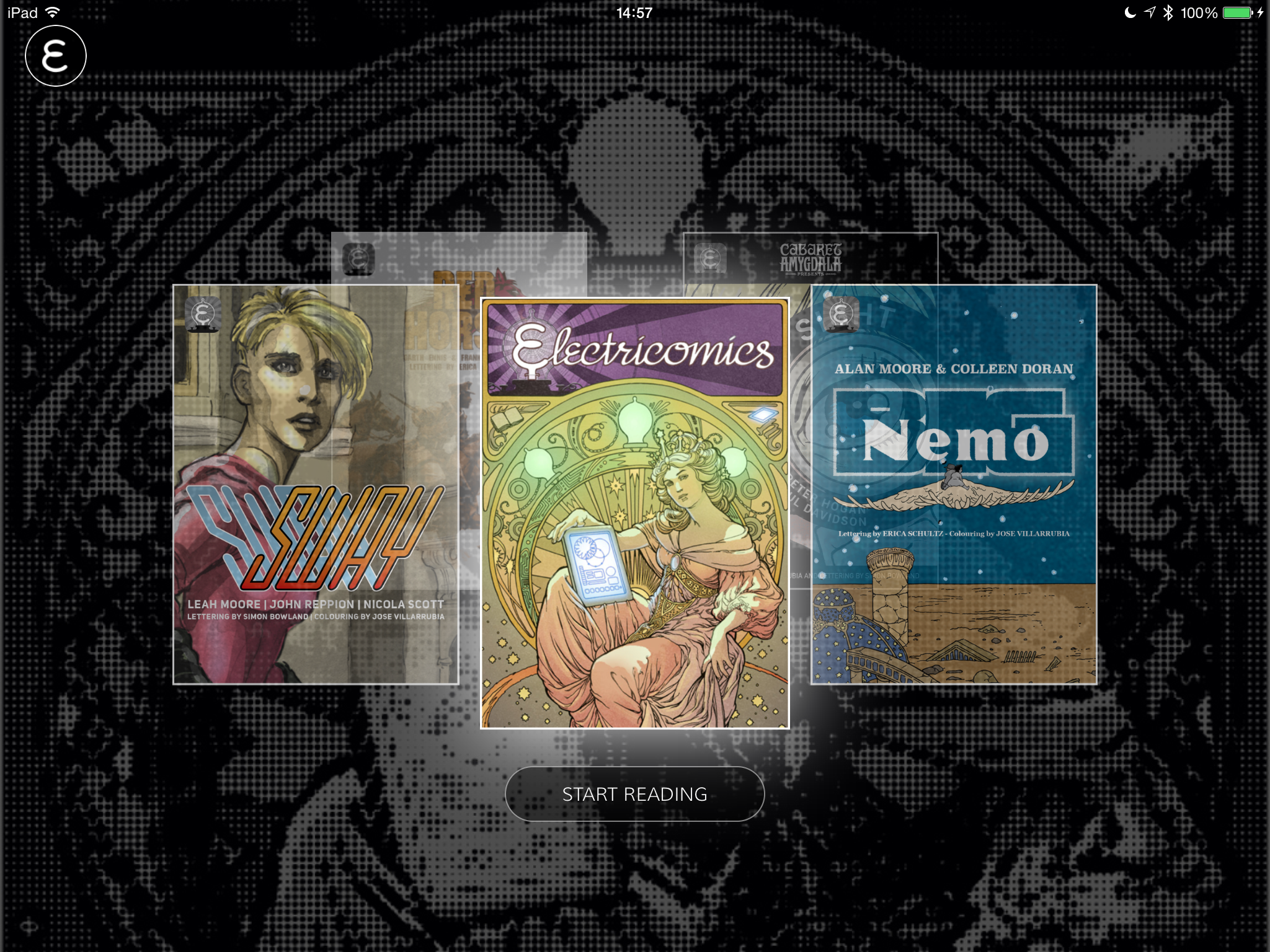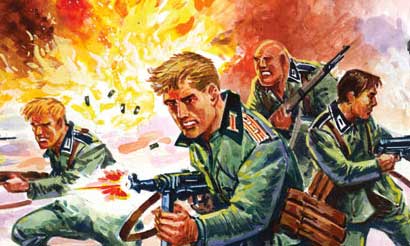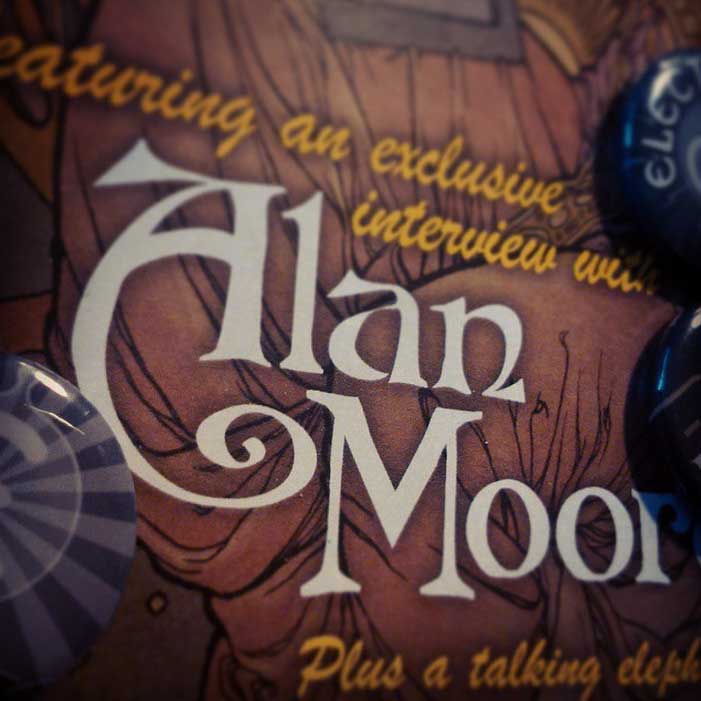With the hopefully temporary suspension of the latest incarnation of Digital Dandy, just months after the demise of its print edition, British comics fans are feeling a little under siege as our industry continues to face threats to its business model with the rise of digital competition and other problems (rising print costs, lower print sales, just to name two).
Comic creator Jamie Smart – a key and for some, controversial figure in the revamping and development of several comics in recent years, including The Dandy – remains bullish about the future of comics, however, and argues we shouldn’t be negative about the medium. His solution to suposed cris? Make More Comics!
Yknow, I’m tired of children’s comics being gradually eroded away right under our noses. Entertaining the nation’s children aside, our biggest concern as artists should be that we’re losing our audience. Our audience of millions of children who want to be delighted and amused by the ridiculous and insane, are increasingly unaware of comics even as a medium. Good luck finding the next generation of British comic talent if we lose all our readers now.
So full credit to The Dandy, and publisher DC Thomson, for at least trying. You may have heard reports of the digital Dandy, hailed as the next incarnation of the 75-year old printed edition, coming to an end less than a year after it started. By all accounts it’s true, and it’s a real shame. I’m sure everyone would admit there were problems with it, and the readers weren’t the only ones frustrated with the bugs and clunks which dogged the otherwise brilliant (brand new) comics it showcased. Having to relaunch so soon after originally launching is hardly ideal either. Full credit to the editorial team (and all involved) for trying to haul it through its turbulent youth, but it seems this just wasn’t working.
I drew for the printed Dandy for nearly a decade, so was excited to hear the plans for the new digital version. And the early talk was very exciting, full of big ideas of what we could do with comics, and how digital would give us a whole new dimension to work with. I would start work on The Numskulls, being given free reign to re-imagine it. I’ll admit I’m quite old-school, preferring to draw comic pages than separate panels up to be animated, but I had tons of fun with it, and went on to draw my own creation Kingo Bango for the second half of my tenure.
I was just one small part, there were scores of talented artists and writers hauled in to contribute, but it seems we just couldn’t make it work.
When The Dandy announced it was to stop printing last year, in a strange way it was actually really good for British comics. Not because we lost The Dandy, of course, but because people started talking about the comics they loved as kids again, and artist started asking what they could do.
It also raised a crucial contradiction which children’s comics always slam up against: adults who decry the loss of their favourite childhood comic, despite never buying comics for their own kids. That’s one thing I heard a ton, and it makes you realise something very important.
The loss of children’s comics isn’t because we don’t have the talent. We do, we have too much talent, not only the established artists but the indies and the ferociously talented younger crowd emerging. The loss of comics is a social thing, it’s a medium being forgotten as people grow out of it. It’s a business thing, as comics are priced off the shelves by the more lucrative magazines. And it’s an ideas thing.
We need better ideas for how to sell comics.
Here are some suggestions I have. They’re not quick fixes, and they’d require publishers and editors to perhaps be a little more adventurous, but in the long term all any of us want is a new golden age for children’s comics. Which I think is completely doable.
1) Hire more female artists
Kids comics have been a boy’s club for a long time, and it’s only natural male artists tend to draw the things that attract male audiences. While there are of course a few notable exceptions, we’ve been largely guys. And while some time ago there could have been the argument that there just aren’t as many women working in the industry, gender doesn’t really factor into the current climate anymore, as anyone who’s walked the small-press tables at a comic convention will attest.
Let’s stop aiming for the ‘boys, aged 8-11’ demographic (which you hear a lot), and start aiming for the ‘excitable audience’ demographic
2) Some editors are brilliant at sourcing out new talent and taking chances on newcomers. Social media like twitter has made that easier to do. But it’s still not enough – the range of artists I see who’s work is just phenomenal, and yet unpublished, is pretty darned disheartening. As I mentioned before we’re not short of talent, we just need more outlets for it all, and outlets which are prepared to try new things. More titles, more experiments, more attempts.
3) Lastly, there is a real onus on the artists themselves to make their own industry. Especially now the Internet makes everything so much easier, we have a duty to start thinking creatively about how best to engage new audiences. And don’t get me wrong, most artists do. Whether that’s school visits, setting up their own anthologies, whatever.
The issue is not the intentions of the artists. The issue is communication between those artists and the publishers. We need everyone to get together and talk about what to do, for publishers to want to engage with their artists and ask them for their help. For their ideas on how to run things. And to use their existing audiences for promotion. We need far more creative thinking, and a huge amount of that would come from artists just given the chance. Publishers have been resisting digital for a long time, or not using it to its fullest. If we could just get those with the talent sitting with those with the money, we could make something remarkable.
It’s important to note that, like in any industry, there are already shining examples of these things being done brilliantly. It’s just not enough, and our medium is struggling. Perhaps it takes the tragic demise of what were once comic behemoths to effect actual change in not only what we do, but who we reach.
– Jamie
 PS: My own contribution to the war effort was www.moosekidcomics.com. I must just say here a million thank yous to the four hundred or so artists who got in touch (that, in itself, is brilliant) and apologies for the delay. We’ve been working on it behind the scenes, and should be in touch soon, it’s only the lack of time which has been holding this up. Thanks for your patience! (Follow us on Twitter for updates: @moosekidcomics)
PS: My own contribution to the war effort was www.moosekidcomics.com. I must just say here a million thank yous to the four hundred or so artists who got in touch (that, in itself, is brilliant) and apologies for the delay. We’ve been working on it behind the scenes, and should be in touch soon, it’s only the lack of time which has been holding this up. Thanks for your patience! (Follow us on Twitter for updates: @moosekidcomics)
This article first appeared on Jamie’s tumblr and is cross posted here with his kind permission.
Jamie Smart is the creator of Space Raoul, Ubu Bubu, Bear, Looshkin, Bunny Vs Monkey, Find Chaffy, Fish Head Steve, Corporate Skull, Whubble and more. He’s designed and drawn many comics, created TV shows and worked on The Dandy, TOXIC, The DFC, The Phoenix and Doctor Who Magazine.
There’s more Jamie Smart and his Art here:
• Read Jamie Smart’s March 2013 interview about the Moose Kids project on Bleeding Cool
Categories: British Comics, Creating Comics, Digital Comics, Featured News



 Electricomics app launches for Apple devices, featuring strips by Ennis, Moore, Reppion, Hogan – and Moore
Electricomics app launches for Apple devices, featuring strips by Ennis, Moore, Reppion, Hogan – and Moore  Commando Marches On: An Interview with Editor Calum Laird
Commando Marches On: An Interview with Editor Calum Laird  Latest developments for Electricomics to be revealed at Thought Bubble
Latest developments for Electricomics to be revealed at Thought Bubble
Hire more female artists? Why? If an artist is good – and funny – it shouldn’t matter what gender they are. I say hire BETTER and FUNNIER artists – and writers – (regardless of their gender) than some of those who dragged down the doomed Dandy to its dismal demise. When it comes to humour, I don’t think there’s much (if any) difference between the tastes of young kids. Boys and girls laugh in equal measure at the classic Tom & Jerry cartoons, so it shouldn’t be any different when it comes to comics.
Also, the ‘ridiculous and the insane’ doesn’t always necessarily equate with ‘funny’. Some comic strips can perhaps be too ridiculous and insane for readers to relate to. There (usually) has to be a grounding in reality, situations that kids recognise (conflict with parental or educational authority, sibling rivalry, etc), to attract them in the first place.
Some will say I’m a pessimist (‘though I’d call myself a ‘realist’), but without two giant competing companies like IPC and DC Thomson battling it out for comics supremacy and being prepared to throw money around, it’s unlikely that Britain will ever have a proper comics industry on the scale we once had again. What we have now is the equivalent of a car boot sale.
As for possible answers, well – I’ve voiced my opinion on the matter before on this site, so I’ll forego repeating myself. However, as Dennis is getting his own comic in order to tie in with (and exploit) his TV series, perhaps it might help to feature other Beano characters on the programme. That might spark an interest in their comic incarnations, as it seems to have done to some degree with the Menace.
Time (perhaps) will tell.